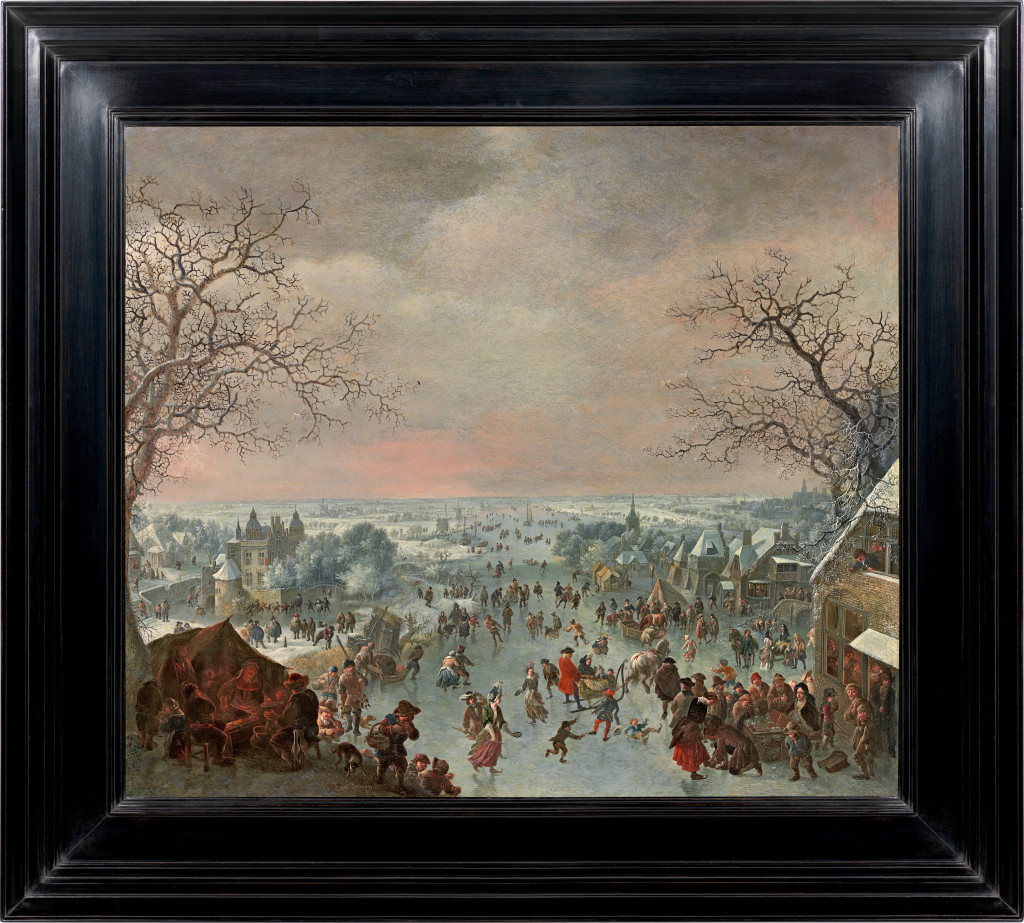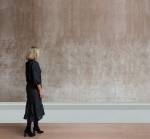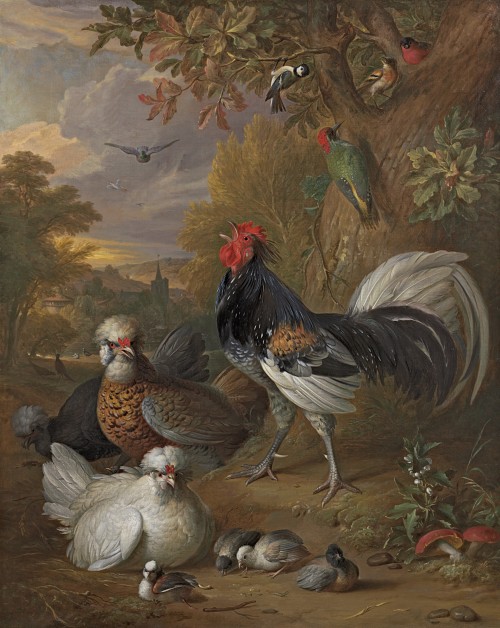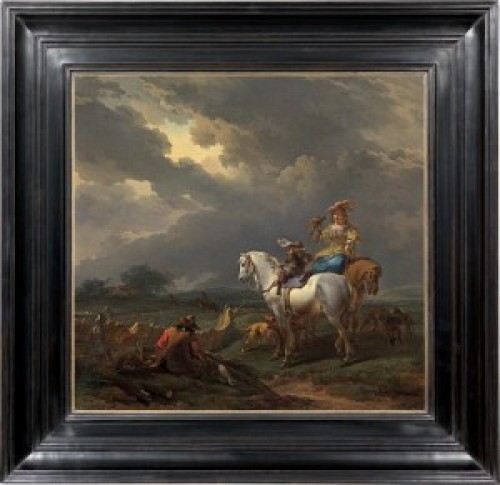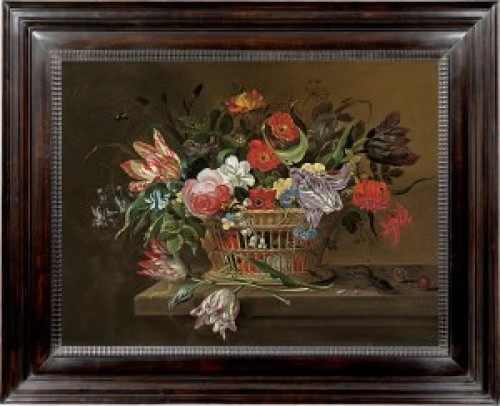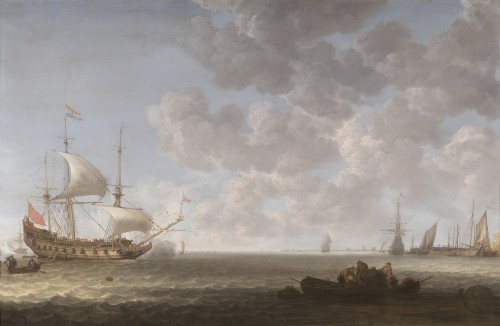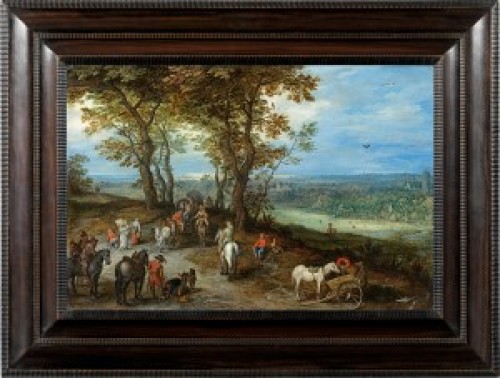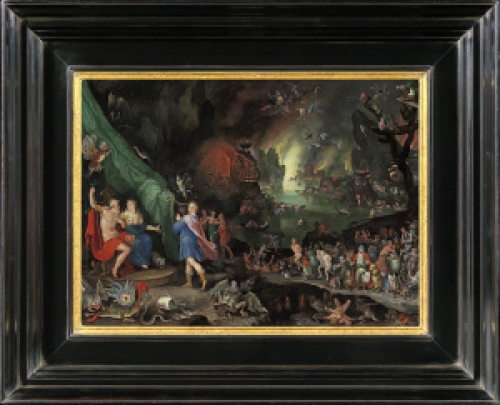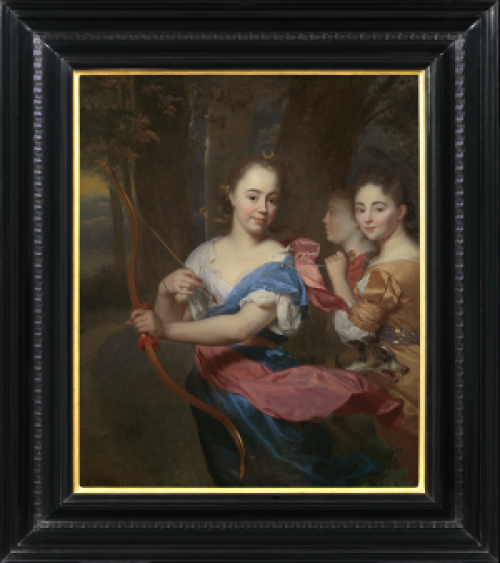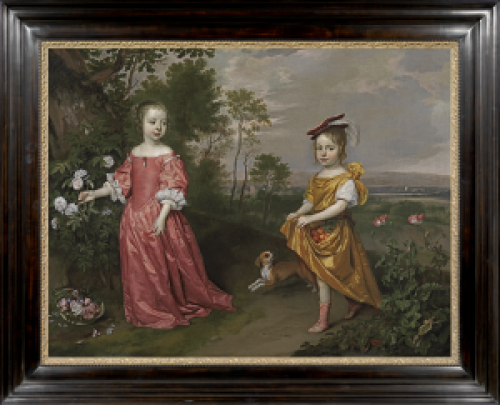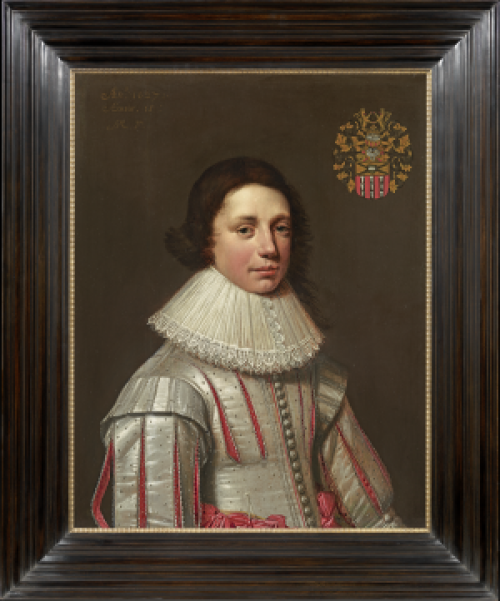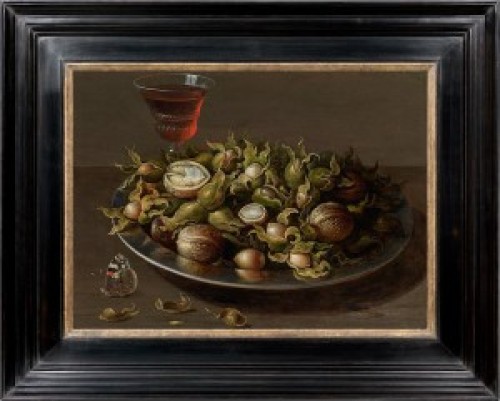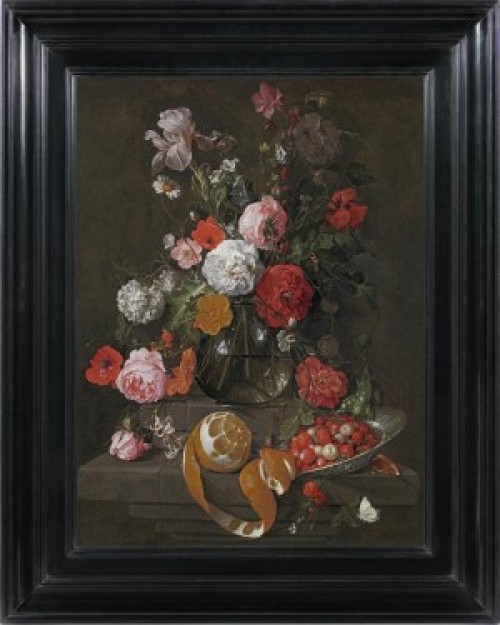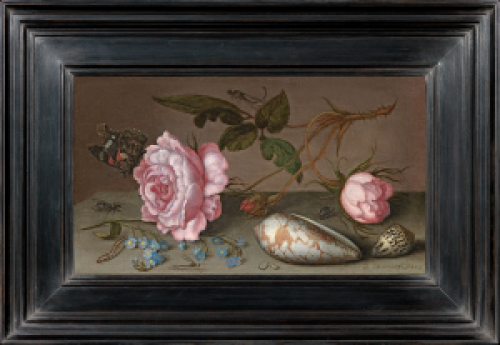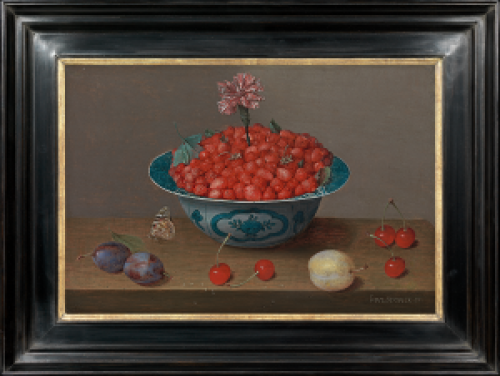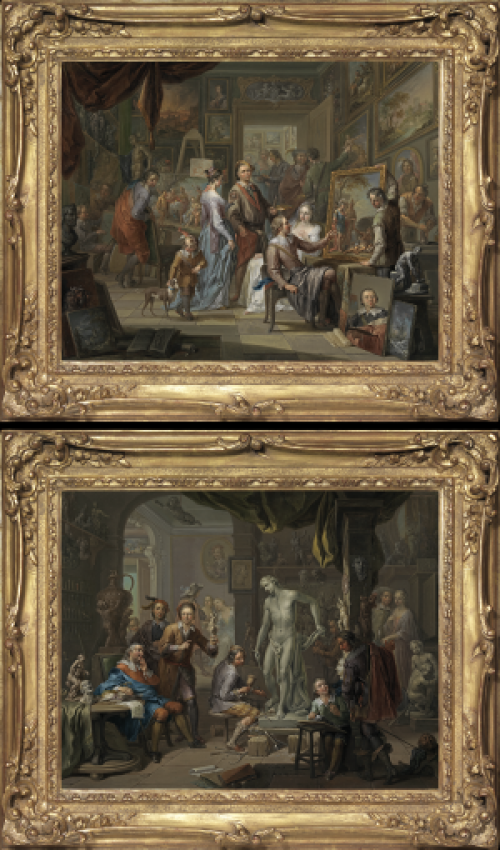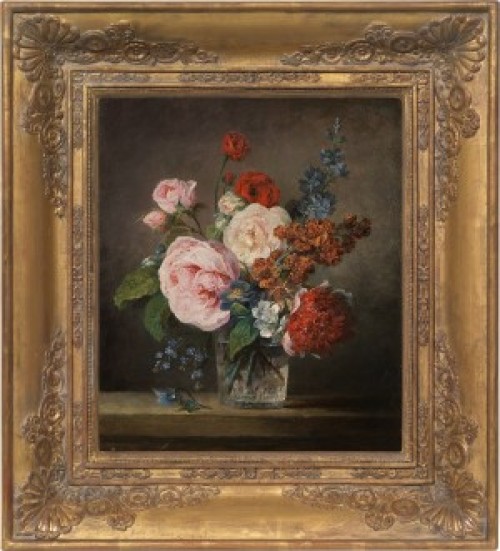JAN GRIFFIER
Amsterdam circa 1642 – 1718 London
Ref: CC 185
A winter landscape with figures skating and merrymaking by a tavern
Signed lower left: JAN GRIFFIER
Oil on copper: 20 ¼ x 23 1/8 in / 51.4 x 58.7 cm
Frame size: 27 x 30 in / 68.6 x 76.2 cm
In a black polished seventeenth century style Dutch frame
Painted circa 1700
Provenance:
Leggatt Brothers, London;
private collection, UK, since at least 1946;
private collection, UK
Jan Griffier the Elder divided his career between the Netherlands and England, painting bird’s-eye topographical views and imaginary Rhenish valley scenes. Among his finest works are a series of winter scenes on copper. The style of the costumes, including the fontange headdresses worn by some of the more well-dressed women, indicates that this Winter scene with figures skating was probably made circa 1700. Around 1695 Griffier had left London for the Netherlands, where he stayed until 1704, living on his yacht and travelling the country in search of motifs.
The painting derives from a tradition of winter landscapes developed by the Kampen painter Hendrick Avercamp (1585-1634) in the early seventeenth century. The period from the mid-sixteenth to the mid-nineteenth century can be termed a ‘Little Ice Age’, with especially hard winters causing regular freezing of canals and waterways. The Dutch made a virtue of necessity by becoming expert skaters, playing colf (the forerunner of golf) on the ice and even constructing ice yachts, an example of which can be seen in the central distance of Griffier’s painting.
Griffier adopts a high viewpoint to look far into the distance of a frozen waterway in a flat landscape. A faint blush of pink at the horizon denotes a wintry sunset. To the right is a fortified village with a larger town beyond; to the left, an elegant, moated castle of the type that still dots today’s Dutch and Belgian countryside. Griffier presents a panoply of Dutch society, from the grand lady in her sledge, attended by a servant in a red coat, to the children freed from school and skating on the moat, watched by their master, to the duck hunter trudging home, to the topers in the tavern, which glows with warmth. In the far distance, by the ice yacht, a group of men play colf on the ice: although these figures are only 5mm tall, their actions read clearly.
Frost fairs were a feature of seventeenth century winters, some large, like the event held on the Thames in London in 1683. More often, they were informal affairs, with a few booths springing up on the ice, providing food and drink to warm the revellers. The landscape is painted with great subtlety, conjuring up the frosty air which softens the silvered fields and hedges through a haze of moisture. Scattered across the fields are post mills which could be turned so that the sails faced into the wind. The smooth surface of the copper plate – a more expensive support than panel – allows Griffier to work with miniaturist delicacy. He achieves great depth of field by the employing warm hues in the foreground, in the touches of red in clothing and the rich browns and burnt sienna of the jolly, firelit group at foreground left, shading into grey and silver tones for the middle and far distance. The picture depicts Dutch society as harmoniously integrated, full of energy, making the most of the pleasures of the winter season.
JAN GRIFFIER THE ELDER
Amsterdam circa 1652 – 1718 London
Jan Griffier the Elder was born in Amsterdam circa 1652. According to Horace Walpole (Anecdotes of Painting in England), Griffier was apprenticed to a carpenter, a tile painter and a flower painter before studying with the landscape painter and etcher Roelant Roghman (c.1620-1686). He may also have studied informally with Adriaen van de Velde (1636-1672), Jacob van Ruisdael (1628/9-1682) and (very doubtfully) Rembrandt.
Griffier moved to London soon after the Great Fire of 1666, which he depicted several times (London Museum and elsewhere). He continued his studies with Jan Looten (1618-1681) and painted numerous highly finished London views. In 1677 he was admitted gratis as a ‘free Brother’ of the London Painter-Stainers’ Company, contributing a Landscape with ruins to their Hall. Griffier had his own yacht on the Thames to sketch scenery and seems to have travelled widely in England, executing views of Windsor, Oxford and Gloucester, among others. Henry Somerset, 1st Duke of Beaufort (1629-1700) was among his patrons. In the 1680s Griffier made a number of etchings after bird and animal drawings by Francis Barlow (c.1626-1704).
Around 1695 Griffier returned to Holland in his yacht but was shipwrecked off the coast, along with a cargo of paintings which he had hoped to sell. He acquired another boat in Rotterdam on which to live with his family, moving around to Amsterdam, Hoorn, Enkhuizen and Dordrecht. Griffier painted many imaginary views of the hilly Rhine valley with picturesque castles, inspired by the Rotterdam painter Herman Saftleven; he is not thought to have visited the Rhine himself. In 1700 he is mentioned in the Album Studiosorum of the Leiden Academy as being forty-eight years old and living on the Stadstimmerwerf (City Carpenter’s Yard).
In 1704 Griffier returned to England and lived in a house on Millbank. Walpole notes that ‘mixed scenes of rivers and rich country were his favourite subjects’[1]. Views of Hampton Court Palace, c.1710 (Tate Britain, London) and Syon House, c.1710 (Duke of Northumberland, Syon House) combine accurate depictions of the mansions with fantasy landscapes taken from a high viewpoint, emphasizing the grandeur of the estates. Griffier combines extreme attention to detail with sensitivity to atmosphere and light. He also, in works such as A turkey and other fowl in a park, 1710 (Tate Britain) essayed the popular genre of bird painting successfully practised in England by Jacob Bogdani (1658-1724). George Vertue called Griffier ‘in his latter part of his time a great mimick of other masters both Italian and Flemish’[2]. He died at his house on Millbank in 1718 and his collection was sold in Covent Garden.
Griffier was married three times, in 1674 to Jane Gilborthorp, in 1687 to Anne Brookes and later to Mary Jones. His son Robert Griffier (1688-c.1750) and grandson Jan Griffier the Younger (fl. 1738-1773) continued the family tradition of painting landscapes.
The work of Jan Griffier the Elder is represented in the Koninklijk Museum voor Schone Kunsten, Antwerp; the Rijksmuseum, Amsterdam; the Hallwyl Museum, Stockholm; Tate Britain, London; the British Museum, London; Cleveland Museum of Art and the Detroit Institute of Arts.
[1] Walpole 1888, vol. II, p.131.
[2] ‘Vertue Note Books I’, The Walpole Society, vol. XVIII, Oxford 1930, pp.50-1.



